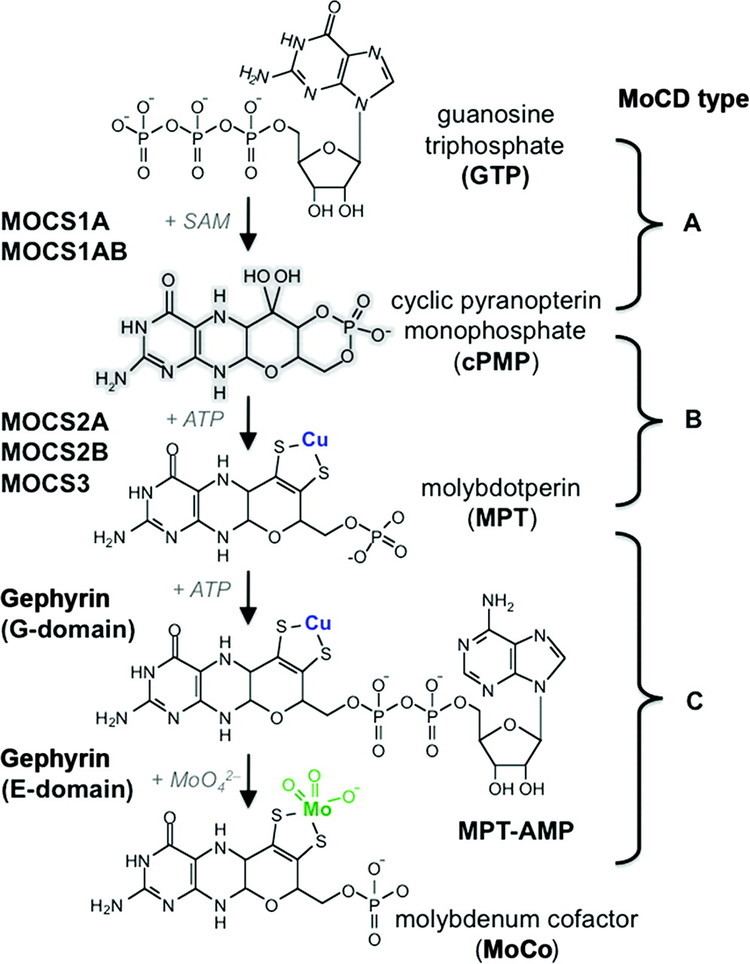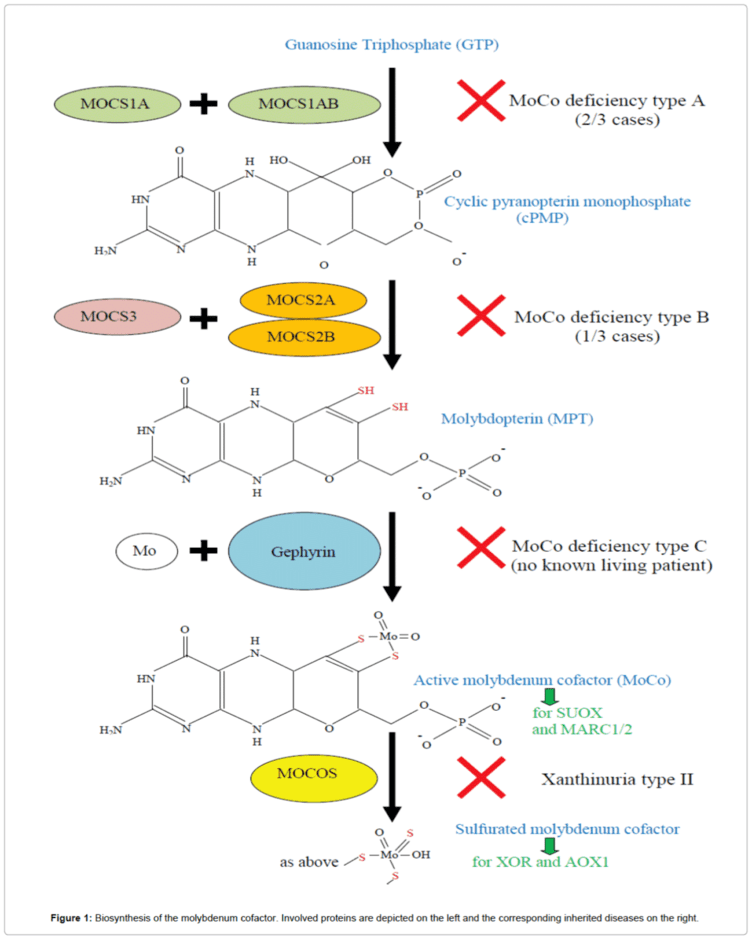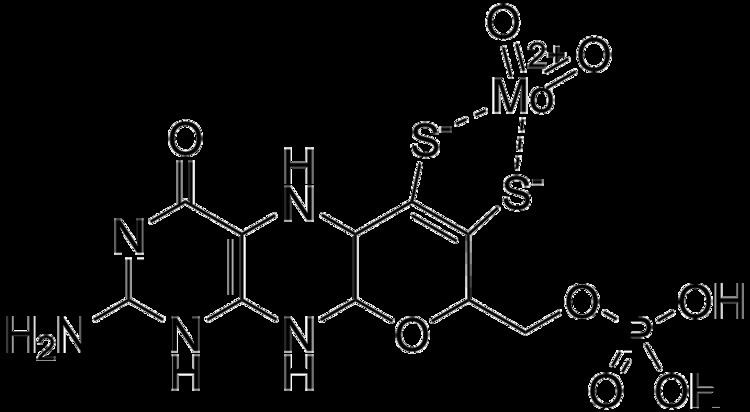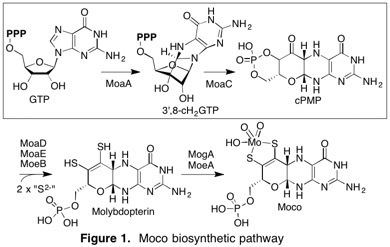 | ||
Diagnosis of molybdenum cofactor deficiency mocd
Molybdenum cofactor (Moco) is a metal-containing prosthetic group common to nearly all molybdoenzymes and is ubiquitous to all kingdoms of life. Moco-dependent enzymes play central roles in many biologically important processes such as purine and sulfur catabolism in mammals, anaerobic respiration in bacteria, and nitrate assimilation in plants. In humans, Moco deficiency results in the pleiotropic loss of activity of enzymes such as sulfite oxidase, xanthine oxidoreductase, and aldehyde oxidase, which in turn causes neurological abnormalities and early childhood death.
It is a coordination complex formed between molybdopterin (which, despite the name, does not contain molybdenum) and an oxide of molybdenum. The molybdenum in this cofactor is in its fully oxidized state (VI), similar to molybdenum in molybdate ion.

Unlike many other cofactors, Moco cannot be taken up as a nutrient, and thus requires de novo biosynthesis. Molybdenum cofactor biosynthesis occurs in four steps: (i) the radical-mediated cyclization of nucleotide, guanosine triphosphate (GTP), to (8S)‑3',8‐cyclo‑7,8‑dihydroguanosine 5'‑triphosphate (3',8‑cH2GTP), (ii) the formation of cyclic pyranopterin monophosphate (cPMP) from the 3',8‑cH2GTP, (iii) the conversion of cPMP into molybdopterin (MPT), (iv) the insertion of molybdate into MPT to form Moco.

Molybdenum cofactor functions directly in ethylbenzene dehydrogenase, glyceraldehyde-3-phosphate ferredoxin oxidoreductase, and respiratory arsenate reductase
In animals and plants these enzymes use molybdenum bound at the active site in a tricyclic molybdenum cofactor. All molybdenum-using enzymes so far identified in nature use this cofactor, save for the phylogenetically ancient molybdenum nitrogenases, which fix nitrogen in some bacteria and cyanobacteria. Molybdenum enzymes in plants and animals catalyze the oxidation and sometimes reduction of certain small molecules, as part of the regulation of nitrogen, sulfur and carbon cycles.





